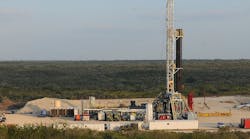The US Environmental Protection Agency proposed regulations on Sept. 30 that would subject refineries and other large industrial operations to greenhouse gas (GHG) regulation under the Clean Air Act while exempting smaller businesses and farms.
Under the proposal, industrial facilities emitting at least 25,000 tons/year of greenhouse gases would have to obtain construction and operating permits covering those emissions. The permits would have to demonstrate use of best available control technologies and energy efficiency measures to minimize GHG emissions when plants are built or significantly modified, EPA said.
"This is a commonsense rule that is carefully tailored to apply to only the largest sources: those from sectors responsible for nearly 70% of US greenhouse gas emissions sources," EPA Administrator Lisa P. Jackson said in a keynote address at the California Governor's Global Climate Summit in Los Angeles.
"This rule allows us to do what the Clean Air Act does best: reduce emissions for better health, drive technology innovation for a better economy, and protect the environment for a better future, all without placing an undue burden on the businesses that make up the better part of our economy," she said.
The American Petroleum Institute and the National Petrochemical & Refiners Association each criticized the proposal in statements given Sept. 30. The US Chamber of Commerce applauded the plan's exemption of smaller businesses and farms, but warned that it could create legal problems. Larger businesses, meanwhile, would be subjected to major new costs and delays, it warned.
14,000 sources
EPA estimated that 400 new sources and modifications to existing sources would be subject to review each year for GHG emissions with the proposed thresholds. About 14,000 large sources, most of which are already subject to clean air permitting requirements, would need to obtain operating permits that include GHG emissions, it said.
Six GHGs would be addressed under what it termed a "proposed tailoring rule," namely carbon dioxide, methane, nitrous oxide, hydrofluorocarbons, perfluorocarbons, and sulfur hexafluoride.
EPA said it also is requesting public comment on its previous interpretation of when certain pollutants, including CO2 and other GHGs, would be covered under the CAA's permitting provisions. A different interpretation could mean that large facilities would need to obtain permits prior to the finalization of a rule regulating GHG emissions, it said.
The proposed rules and more information are posted online at www.epa.gov/nsr/actions.html. Comments will be accepted on the proposals for 60 days after their publication in the Federal Register, the agency said. API and NPRA responded immediately.
API said in a statement that it and several other groups do not believe that the CAA was designed to address GHG emissions. "We also question whether EPA has the legal authority to modify the threshold established by Congress in the act to regulate pollutants, such as GHG emissions," it said.
'Not isolated'
The proposal illustrated the perils of forcing GHG regulations into the CAA, NPRA Pres. Charles T. Drevna observed in a separate statement. "This proposal incorrectly assumes that one industry's greenhouse gas emissions are worse than another's," he said. "Greenhouse gas emissions are global in nature, and are not isolated to a few select industries."
The CAA "stipulates unequivocally" that the major sources' permitting threshold is 250 tons for criteria pollutants, Drevna noted. "EPA lacks the legal authority to categorically exempt sources that exceed the [CAA's] major source threshold from permitting requirements, and this creates a troubling precedent for any agency actions in the future," he said.
Referring to the proposed regulation's exemption of smaller businesses and farms, "common sense prevailed at EPA and we are thankful," said Bill Kovacs, senior vice-president of environment, technology, and regulatory affairs at the US Chamber of Commerce. "However, we fear this proposal rests on shaky legal ground," he said, adding, "As a result, EPA may have only kicked the problem down the road, or into the courthouse, and may have to regulate all small businesses should some environmental groups prevail in likely lawsuits."
In a statement, the chamber said the proposal's provision requiring plants emitting 25,000 tons or more of GHGs annually to get preconstruction permits, which could cost hundreds of thousands of dollars and take from 8 months to more than a year to obtain. This would put major roadblocks in domestic efforts to build new major facilities and projects as the country tries to work its way out of the recession and provide affordable and reliable energy for the future, the business advocacy organization warned.
Chamber cited EPA data showing that a typical CAA Prevention of Significant Deterioration permit costs a regulated entity $125,000 and takes 866 hr to complete. The requirement to obtain these permits takes effect as soon as EPA makes the rule effective, the group added.
Covered facilities also would have to get Title V operating permits, which effectively would make them pay a $25-40 carbon tax for the first 4,000 tons of GHGs emitted, it said. Each regulated entity also could be subject to a lawsuit by any US citizen, according to the chamber.
More Oil & Gas Journal Current Issue Articles
More Oil & Gas Journal Archives Issue Articles
